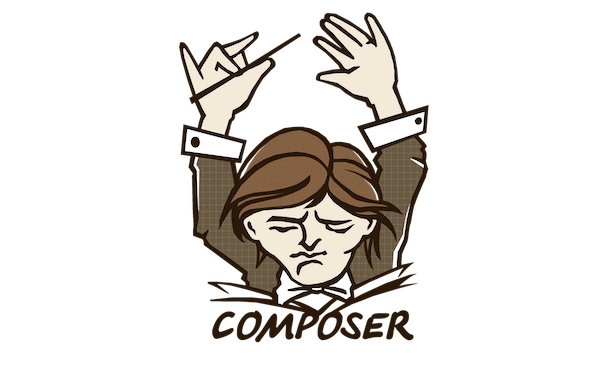To install the Composer package globally, you need to use the composer global require command, 1. Execute composer global require vendor/package-name to install the package to the global vendor directory; 2. Make sure that the Composer bin directory (such as ~/.composer/vendor/bin or C:\Users\YourName\AppData\Roaming\Composer\vendor\bin) has been added to the system PATH to run the executable file; 3. Update or composer global update via composer global update vendor/package-name uninstalls the global package. This method is suitable for CLI tools used across projects, such as laravel/installer or php-cs-fixer, and only needs to configure PATH once to take effect permanently.

To install a package globally with Composer, you use the global keyword. This installs the package into a central Composer directory on your system, making its executables available globally (assuming the Composer bin directory is in your system's PATH).

Here's how to do it:
1. Use the composer global require command
Run this command in your terminal:

composer global require vendor/package-name
For example, to install Laravel's installer globally:
composer global require laravel/installer
This installs the package into Composer's global vendor directory (usually located at ~/.composer/vendor on Linux/macOS or C:\Users\YourName\AppData\Roaming\Composer\vendor on Windows).

2. Make sure the Composer bin directory is in your PATH
After installing a global package, you can run its binaries (like laravel , phpcs , etc.) only if the Composer bin directory is in your system's PATH .
The global Composer bin directory is typically:
- Linux/macOS :
~/.composer/vendor/bin - Windows :
C:\Users\YourName\AppData\Roaming\Composer\vendor\bin
Add it to your shell profile (like .bashrc , .zshrc , or system environment variables on Windows):
export PATH="$HOME/.composer/vendor/bin:$PATH"
Then reload your shell:
source ~/.zshrc # or ~/.bashrc
? Tip: You only need to do this once. After the bin directory is in your PATH, all future global packages will be executed automatically.
3. Updating or removing global packages
Update a global package:
composer global update
Remove a package:
composer global remove vendor/package-name
Common use cases
Global packages are typically CLI tools, such as:
-
laravel/installer -
phpunit/phpunit -
squizlabs/php_codesniffer -
friendsofphp/php-cs-fixer
These tools are meant to be used across multiple projects, so installing them globally avoids duplication.
Just remember: global doesn't mean “available in every project” — it means “installed once, usable from anywhere via command line.” For project-specific dependencies, always use
composer requirewithoutglobal.Basically: use
globalfor tools, not for app dependencies.The above is the detailed content of How to install a package globally with Composer?. For more information, please follow other related articles on the PHP Chinese website!
-

Hot AI Tools

Undress AI Tool
Undress images for free

Undresser.AI Undress
AI-powered app for creating realistic nude photos

AI Clothes Remover
Online AI tool for removing clothes from photos.

Clothoff.io
AI clothes remover

Video Face Swap
Swap faces in any video effortlessly with our completely free AI face swap tool!

Hot Article

Hot Tools

Notepad++7.3.1
Easy-to-use and free code editor

SublimeText3 Chinese version
Chinese version, very easy to use

Zend Studio 13.0.1
Powerful PHP integrated development environment

Dreamweaver CS6
Visual web development tools

SublimeText3 Mac version
God-level code editing software (SublimeText3)

Hot Topics
 How to view the version number of laravel? How to view the version number of laravel
Apr 18, 2025 pm 01:00 PM
How to view the version number of laravel? How to view the version number of laravel
Apr 18, 2025 pm 01:00 PM
The Laravel framework has built-in methods to easily view its version number to meet the different needs of developers. This article will explore these methods, including using the Composer command line tool, accessing .env files, or obtaining version information through PHP code. These methods are essential for maintaining and managing versioning of Laravel applications.
 Laravel framework installation method
Apr 18, 2025 pm 12:54 PM
Laravel framework installation method
Apr 18, 2025 pm 12:54 PM
Article summary: This article provides detailed step-by-step instructions to guide readers on how to easily install the Laravel framework. Laravel is a powerful PHP framework that speeds up the development process of web applications. This tutorial covers the installation process from system requirements to configuring databases and setting up routing. By following these steps, readers can quickly and efficiently lay a solid foundation for their Laravel project.
 Recommended Laravel's best expansion packs: 2024 essential tools
Apr 30, 2025 pm 02:18 PM
Recommended Laravel's best expansion packs: 2024 essential tools
Apr 30, 2025 pm 02:18 PM
The essential Laravel extension packages for 2024 include: 1. LaravelDebugbar, used to monitor and debug code; 2. LaravelTelescope, providing detailed application monitoring; 3. LaravelHorizon, managing Redis queue tasks. These expansion packs can improve development efficiency and application performance.
 What is the difference between php framework laravel and yii
Apr 30, 2025 pm 02:24 PM
What is the difference between php framework laravel and yii
Apr 30, 2025 pm 02:24 PM
The main differences between Laravel and Yii are design concepts, functional characteristics and usage scenarios. 1.Laravel focuses on the simplicity and pleasure of development, and provides rich functions such as EloquentORM and Artisan tools, suitable for rapid development and beginners. 2.Yii emphasizes performance and efficiency, is suitable for high-load applications, and provides efficient ActiveRecord and cache systems, but has a steep learning curve.
 Laravel environment construction and basic configuration (Windows/Mac/Linux)
Apr 30, 2025 pm 02:27 PM
Laravel environment construction and basic configuration (Windows/Mac/Linux)
Apr 30, 2025 pm 02:27 PM
The steps to build a Laravel environment on different operating systems are as follows: 1.Windows: Use XAMPP to install PHP and Composer, configure environment variables, and install Laravel. 2.Mac: Use Homebrew to install PHP and Composer and install Laravel. 3.Linux: Use Ubuntu to update the system, install PHP and Composer, and install Laravel. The specific commands and paths of each system are different, but the core steps are consistent to ensure the smooth construction of the Laravel development environment.
 Laravel logs and error monitoring: Sentry and Bugsnag integration
Apr 30, 2025 pm 02:39 PM
Laravel logs and error monitoring: Sentry and Bugsnag integration
Apr 30, 2025 pm 02:39 PM
Integrating Sentry and Bugsnag in Laravel can improve application stability and performance. 1. Add SentrySDK in composer.json. 2. Add Sentry service provider in config/app.php. 3. Configure SentryDSN in the .env file. 4. Add Sentry error report in App\Exceptions\Handler.php. 5. Use Sentry to catch and report exceptions and add additional context information. 6. Add Bugsnag error report in App\Exceptions\Handler.php. 7. Use Bugsnag monitoring
 What is the yii framework? Tutorial on how to use yii framework
Apr 18, 2025 pm 10:57 PM
What is the yii framework? Tutorial on how to use yii framework
Apr 18, 2025 pm 10:57 PM
Article Summary: Yii Framework is an efficient and flexible PHP framework for creating dynamic and scalable web applications. It is known for its high performance, lightweight and easy to use features. This article will provide a comprehensive tutorial on the Yii framework, covering everything from installation to configuration to development of applications. This guide is designed to help beginners and experienced developers take advantage of the power of Yii to build reliable and maintainable web solutions.
 yii2 admin finished using
Apr 18, 2025 pm 10:18 PM
yii2 admin finished using
Apr 18, 2025 pm 10:18 PM
Yii2 AdminLTE is a backend management system template based on the Yii2 framework and AdminLTE management template. It provides a wealth of controls and features that can help developers quickly build powerful backend management systems. Installation and use: Install through composer: composer requires kartik-v/yii2-adminlte to configure the AdminLTE module in config/web.php to run the migration command: yii migrate/up --migrationPath=@kartik-v/yii2-adminlte/migrations






